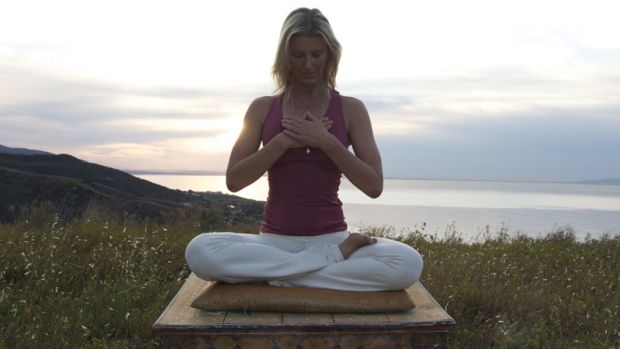
It can be more difficult for people with chronic anxiety to meditate, because they have more stress-ridden thoughts than the average person, according to clinical psychologist Mitch Abblett.
That said, there are plenty of ways to achieve the same level of relaxation without sitting cross-legged on the floor. They’re all rooted in a technique called “the distraction method.” It’s part of Dr. Albert Ellis’ Rational Emotive Behavioral Therapy, which works under the assumption that a person’s way of thinking is intrinsically tied to their emotional functioning.
The method consists of doing basic activities can help you take a step back from your anxiety. Psychologist Anjhula Mya Singh Bais explains the distractions can help people to “objectively view issues causing disturbances in a manner that is both pragmatic and helpful in a low intensity, low pressure and low stakes environment.”
What she means is by doing something simple and functional, you may be able to relax, regroup and perhaps reexamine the issue that was causing your anxiety from a much more levelheaded place.
Here are six suggestions for activities that may calm your brain without meditation, based on expert opinions and my personal experience:
1. Arts and crafts — including but not limited to coloring, pottery and knitting
Working with your hands diverts energy into something productive, and often results in a cool or even beautiful creation.
“Being artistic calms the nervous system because when we’re focused on creative activities, our attention moves away from constant worrying,” New York therapist Kimberly Hershenson says. “This helps the nervous system regulate, allowing our brain to clear space to process difficult issues.”
2. All varieties of yoga
There are a multitude of benefits that come from practicing yoga, and a quieter mind is just one of them. It’s basically active meditation, which is great for the anxiety-prone, because it allows you to focus on your breathing and body without getting stuck in your head.
“Yoga helps build concentration and is a great way to improve overall focus,” explains Silvia Polivoy, clinical psychologist and co-founder of the Thevine Spiritual Center. “In addition, it enhances memory and improves brain power.”
If you’re new to yoga, I highly recommend starting with Lesley Fightmaster’s online videos.
3. Go for a walk
It may sound simple, but similar to yoga, walking outside (without your phone) allows you to refocus your anxious energy on a physical act and take in the world around you. Here’s a great way to start, courtesy of psychotherapist Melissa Divaris Thompson:
“The more you can get into nature the better. Walk with consciousness. Notice how your breath feels. Notice your feet walking on the surface with each step.”
4. Singing, humming and whistling
I often sing and whistle to bring myself back into the present. It automatically lightens my mood and regulates my breathing if I’m hyperventilating. The best part is you don’t have to be a good singer for it to work for you.
5. Free-writing before bed
This one’s especially great for people with anxiety that affects their sleep. David Ezell, the clinical director and CEO of therapy provider Darien Wellness, recommends writing with a pen and paper to get away from distracting screens.
“The objective is to relieve the pressure of thoughts analogous to a water tank too full of H2O,” he writes in an email. “I tell my patients to see their arm as a pipe and the notebook the reservoir into which the water flows.”
6. Cooking
Cooking is filled with basic tasks that let you focus on all sorts of sights, smells, tastes and textures. Once you’re done, you can practice mindfulness while you eat.
Your personal distraction method may not be on this list. But if you keep experimenting with different strategies, you’ll be sure to find it.















You must be logged in to post a comment.